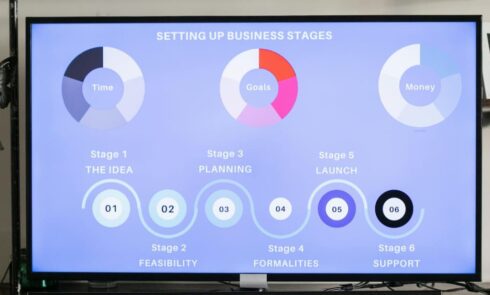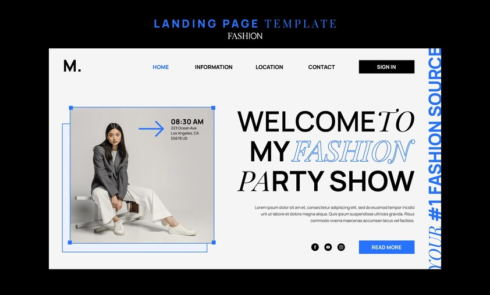In the realm of storytelling, pictorial writing emerges as a captivating fusion of artistry and narrative ingenuity. This curated collection of pictorial writing examples beckons you to explore the diverse and enriching world of visual narratives.
From the echoes of historical chronicles to the reflections of contemporary issues, each example serves as a testament to the profound impact that arises from the harmonious integration of visuals and storytelling.
What is Pictorial Writing?
Pictorial writing, synonymous with visual storytelling, is an expressive narrative form reliant on a sequence of images to unfold a story, elicit emotions, and communicate information.
Rooted in the early 20th century, luminaries like Lewis Hine pioneered this medium by documenting the stark realities of child labor, propelling pictorial writing into a potent conduit for journalistic and artistic expression.
Key Elements of Pictorial Writing
Pictorial essays, characterized by a series of images crafting a cohesive narrative or conveying specific information, seamlessly blend visuals and text. This format allows for diverse storytelling, encompassing chronological narratives and capturing singular moments united by a common thematic thread.
Crafting Compelling Pictorial Essays
Design Techniques:
- Scrollytelling Images: Foster viewer engagement by smoothly transitioning between photos overlaid with text, offering a dynamic approach to presenting visual narratives;
- Scroll Speed and Progress Bars: Enhance user experience by varying scroll speeds and incorporating progress bars, preventing content fatigue and guiding readers seamlessly through the essay;
- Image Comparison Slider: Showcase transformations through an interactive image comparison slider, allowing viewers to explore before-and-after visuals;
- Clickable Image Hotspots: Maximize screen space with clickable hotspots, providing additional information and enhancing the overall storytelling experience;
- Image Carousels: Facilitate interactive navigation with horizontally navigable image carousels, creating an engaging and immersive storytelling experience.
Best Practices for Design:
- Knowing Your Story: Ensure clarity and coherence by identifying the main points you want to visually convey in your pictorial essay;
- Diverse Shot Selection: Sustain viewer interest by incorporating varied angles, close-ups, and compositions, steering clear of monotony;
- Selecting the Best Images: Prioritize relevance over aesthetics, ensuring each photo contributes meaningfully to the narrative;
- Audience Consideration:Tailor your style and tone to the target demographic, resonating effectively with the intended audience;
- Maintaining Momentum: Employ scroll-triggered transitions, animations, and interactivity to captivate viewers, ensuring sustained engagement throughout the essay.
Pictorial Writing Examples: From Egmont to Taranaki
Immerse yourself in the compelling Vev-built pictorial essay, “From Egmont to Taranaki,” where personal narratives intertwine with historical lessons. Animated effects and scrollytelling techniques elevate the visual journey, creating a captivating exploration.
Food for Thought
Offering a global lens on food production, “Food for Thought” utilizes fixed image parallax scrolling and hotspots to provide a comprehensive view of people, landscapes, and processes. This example exemplifies the potential for depth and engagement within pictorial storytelling.
Witnesses to History Keepers of Memory
The Montreal Holocaust Museum’s interactive creation delves into the lives of Holocaust survivors, utilizing hover-triggered animations and a thoughtful narrative structure to convey a powerful message. This example demonstrates the impactful potential of visual storytelling.
Hakai Autonomous Ocean
Delve into the oceanic realm with “Hakai Autonomous Ocean,” a single-page essay showcasing scrollytelling images and image comparison sliders. Narrating the story of a malfunctioning $150,000 robot beneath the sea, this example immerses the audience in a dramatic and engaging experience.
Moma Strange Brew
Unveiling the creation of John Klines’ art installation, “Skittles,” this essay employs humor and satire to explore consumerism. The step-by-step visual journey is complemented by fade-ins and interactive elements, showcasing the potential for creativity within the pictorial writing format.
UNICEF
Documenting UNICEF’s humanitarian efforts through photographer Jan Grarup, this pictorial essay reveals the organization’s Denmark warehouse and its impact in various countries. The inclusion of a scroll progress bar aids navigation, providing a seamless and informative visual journey.
The Guardian
“Slippery slope? Alpine tourism in the face of climate crisis” delves into the interplay between climate change and the Alps. Image comparison sliders showcase the region in both winter and other seasons, maximizing screen space for impactful visuals and fostering a deeper understanding of global issues.
The Naija Story
Divided into sections covering politics, technology, and entertainment, “The Naija Story” effectively utilizes photo essays to highlight Nigeria’s history. Scroll-triggered animations and connecting lines simplify the narrative for an artistic yet easily comprehensible presentation, making history accessible through visual storytelling.
Ukrainian Ballerina Uprooted by War Flies High Again
A poignant piece from Reuters, this essay chronicles the journey of ballet dancer Ganna Muromtseva, seamlessly blending writing and photos. The use of fade-ins and text overlays adds a dynamic touch to the visual storytelling, providing a personal and emotional insight into the subject’s life.
Creating Stunning Pictorial Essays with Vev
Vev stands as a creative powerhouse, offering a myriad of tools to bring pictorial essays to life. Image comparison sliders, carousels, scroll animations, and other pre-built elements empower storytellers, eliminating the need for complex coding.
Features: Image Comparison Sliders, Carousels, Scroll Animations
Vev’s user-friendly interface allows journalists, designers, and publishers to seamlessly integrate dynamic elements into their visual content. Image comparison sliders showcase transformations, carousels enable interactive navigation, and scroll animations enhance the overall storytelling experience. With Vev, the creative possibilities of visual storytelling are boundless.
Conclusion
The art of pictorial writing serves as a beacon for storytellers navigating the complex digital landscape. The convergence of visual aesthetics and narrative impact, coupled with meticulous design techniques and best practices, unveils the true potential of this unique medium.
Whether documenting historical events, unraveling global issues, or presenting personal narratives, pictorial essays offer a distinctive and engaging avenue for storytelling.
With the innovative capabilities of tools like Vev, storytellers can unleash their creativity, ensuring their narratives not only stand out but resonate deeply in a visually saturated digital realm.

